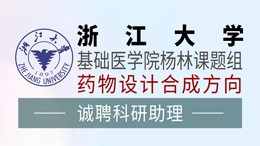当前位置:
X-MOL 学术
›
J. Hazard. Mater.
›
论文详情
Our official English website, www.x-mol.net, welcomes your
feedback! (Note: you will need to create a separate account there.)
Impacts and transport of microplastics: Population dynamics in frogs and the transfer between aquatic and terrestrial ecosystems
Journal of Hazardous Materials ( IF 12.2 ) Pub Date : 2025-04-09 , DOI: 10.1016/j.jhazmat.2025.138212
Jun-Kyu Park 1 , Ji-Eun Lee 1 , Yuno Do 1
Journal of Hazardous Materials ( IF 12.2 ) Pub Date : 2025-04-09 , DOI: 10.1016/j.jhazmat.2025.138212
Jun-Kyu Park 1 , Ji-Eun Lee 1 , Yuno Do 1
Affiliation

|
Increased plastic production has led to severe environmental issues, with microplastics (MPs) becoming widespread contaminants. Amphibians, particularly frogs, are crucial bioindicators because of their permeable skin and biphasic life cycles, making them highly vulnerable to pollutants. This study examined the effects of MPs on Dryophytes japonicus , focusing on hatching, survival, growth, and metamorphosis. We also explored how frogs facilitate the transfer of MPs from aquatic to terrestrial environments. Using an individual-based modeling (IBM) approach, nine male-female pairs were observed in controlled breeding environments. Survival probabilities were analyzed using Kaplan-Meier estimates, and population dynamics were simulated for over 20 years under varying resource conditions. The results demonstrated significantly lower survival rates in the MP-exposed groups. Simulations indicated that exposed populations declined continuously under resource limitation, whereas MP transfer was the highest under high-density, resource-rich conditions. The control groups had larger populations, but were more vulnerable to extinction, whereas the treatment groups showed resilience to resource stress. Frogs may act as vectors, spreading MPs into terrestrial ecosystems, and contributing to soil contamination and trophic disruption. To mitigate these effects, conservation strategies such as habitat restoration, pollution control, and disease management are essential for preserving amphibian populations and ecosystem balance.
中文翻译:

微塑料的影响和运输:青蛙的种群动态以及水生和陆地生态系统之间的转移
塑料产量的增加导致了严重的环境问题,微塑料 (MP) 成为广泛的污染物。两栖动物,尤其是青蛙,是重要的生物指标,因为它们的皮肤可渗透且生命周期是双相的,这使得它们极易受到污染物的影响。本研究考察了 MPS 对 Dryophytes japonicus 的影响,重点关注孵化、生存、生长和。我们还探讨了青蛙如何促进 MP 从水生环境转移到陆地环境。使用基于个体的建模 (IBM) 方法,在受控的繁殖环境中观察到 9 对雄性-雌性。使用 Kaplan-Meier 估计分析生存概率,并在不同的资源条件下模拟了 20 多年的种群动态。结果表明,MP 暴露组的存活率显著降低。模拟表明,在资源有限的情况下,暴露种群持续下降,而在高密度、资源丰富的条件下,MP 转移最高。对照组的种群数量较大,但更容易灭绝,而治疗组则表现出对资源压力的适应能力。青蛙可能充当媒介,将 MP 传播到陆地生态系统中,并导致土壤污染和营养破坏。为了减轻这些影响,栖息地恢复、污染控制和疾病管理等保护策略对于保护两栖动物种群和生态系统平衡至关重要。
更新日期:2025-04-09
中文翻译:

微塑料的影响和运输:青蛙的种群动态以及水生和陆地生态系统之间的转移
塑料产量的增加导致了严重的环境问题,微塑料 (MP) 成为广泛的污染物。两栖动物,尤其是青蛙,是重要的生物指标,因为它们的皮肤可渗透且生命周期是双相的,这使得它们极易受到污染物的影响。本研究考察了 MPS 对 Dryophytes japonicus 的影响,重点关注孵化、生存、生长和。我们还探讨了青蛙如何促进 MP 从水生环境转移到陆地环境。使用基于个体的建模 (IBM) 方法,在受控的繁殖环境中观察到 9 对雄性-雌性。使用 Kaplan-Meier 估计分析生存概率,并在不同的资源条件下模拟了 20 多年的种群动态。结果表明,MP 暴露组的存活率显著降低。模拟表明,在资源有限的情况下,暴露种群持续下降,而在高密度、资源丰富的条件下,MP 转移最高。对照组的种群数量较大,但更容易灭绝,而治疗组则表现出对资源压力的适应能力。青蛙可能充当媒介,将 MP 传播到陆地生态系统中,并导致土壤污染和营养破坏。为了减轻这些影响,栖息地恢复、污染控制和疾病管理等保护策略对于保护两栖动物种群和生态系统平衡至关重要。



































 京公网安备 11010802027423号
京公网安备 11010802027423号